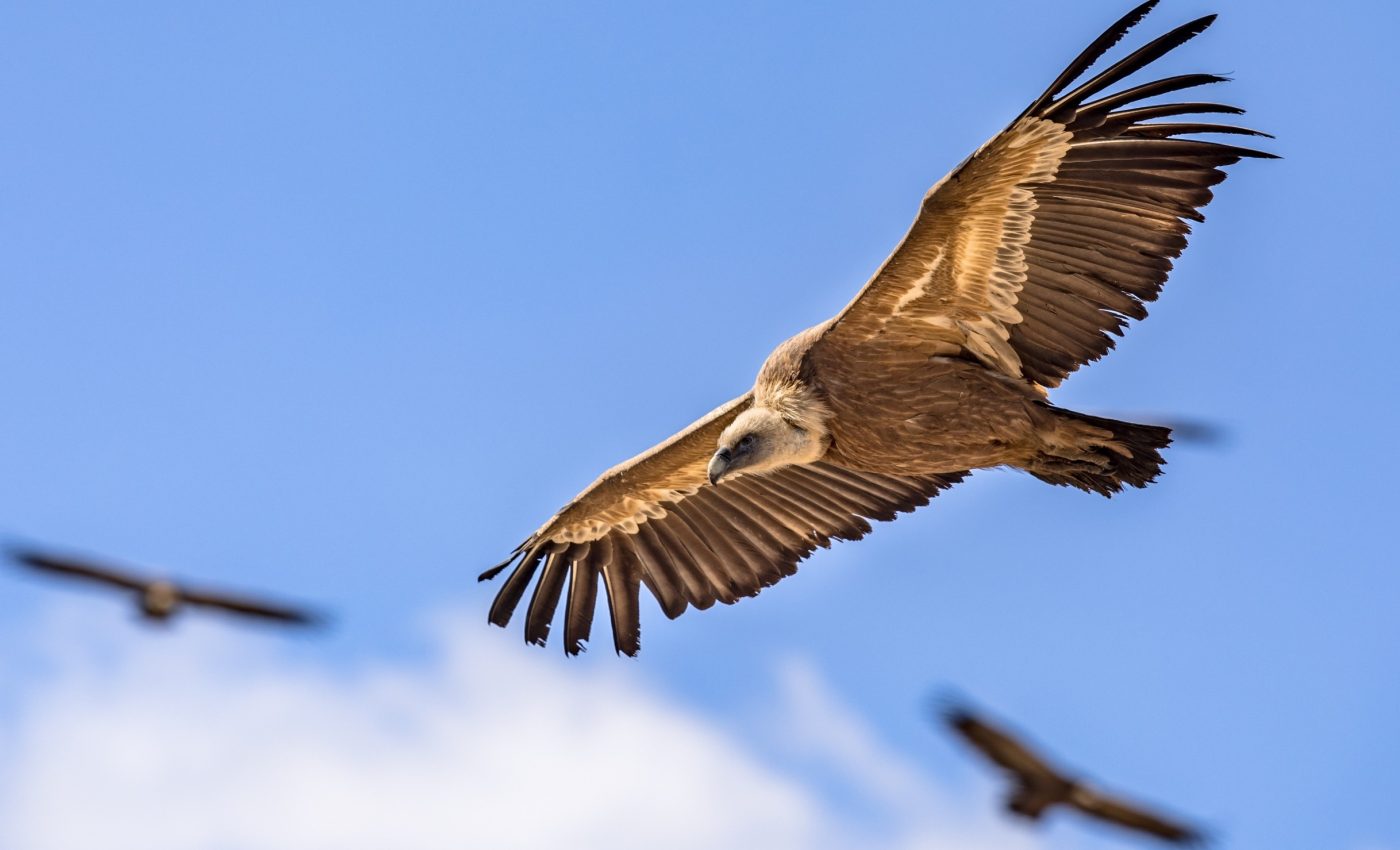
Humans were born scavengers - and it changed our evolution
For years, scavenging has been cast as the desperate move of early humans – what they did when hunting failed or plants ran dry.
But new research argues that carrion – the decaying flesh of dead animals – wasn’t a last resort at all. It may have been a reliable, efficient, and even strategic way to survive.
Led by Ana Mateos and Jesús Rodríguez of the Centro Nacional de Investigación sobre la Evolución Humana (CENIEH), the study draws on paleontology, archaeology, and ecology to reframe how and why humans used carrion.
The results suggests that scavenging may have helped early humans spread across the globe.
When humans became scavengers
The classic narrative casts scavenging as risky, rare, and unpredictable – an activity loaded with pathogens and conflict with carnivores. The new review flips that script.
Ecological studies show carcasses are often more dependable than expected and tend to appear when other foods run short, making them a lifeline during seasonal bottlenecks.
“When large terrestrial and marine mammals die, they provide tons of easily accessible food, enabling many scavenger species to coexist and feed at the same time,” said Mateos, the lead author of the study.
Crucially, many animals – including humans – have strategies that cut disease risks while exploiting a windfall of calories.
The researchers argue that, rather than abandoning scavenging as soon as hunting tools improved, hominins likely kept it in the toolkit because it offered a high return for relatively little effort.
Humans fit the scavenger mold
Scavenging rewards endurance, mobility, and tolerance to microbes. Humans check all three boxes.
“Humans have been anatomically, physiologically, behaviorally, and technologically adapted from our origins to be efficient scavengers,” said Mateos.
“The acidic pH of the human stomach can act as a defense against pathogens and toxins, and, moreover, the risk of infection was significantly reduced when we began using fire to cook.”
“Furthermore, humans can travel long distances with relatively little energy expenditure compared to other mammals, which is essential for locating enough carrion.”
Those advantages make a difference on open ground or coastlines where large carcasses can be found, tracked, or intercepted.
Endurance walking and running stretch the search radius. Fire and gut acidity reduce microbial threats. And technology – from simple flakes to heavier hammerstones – turns a sealed carcass into accessible calories and fat.
Cooperation changed the game
Technology and cooperation amplify the payoff. “Language, even in its beginnings, allowed us to communicate and organize ourselves to look for the corpses of large animals or snatch the prey from a large predator, which we could drive away by throwing projectiles (or simply stones),” said Rodriguez.
“Even the simplest flake tools can be used to cut through the thick hide of large mammals, reach their interior, and efficiently scrape off the remaining meat from an abandoned carcass, while stones used as hammers could break the bones to access the fat and marrow inside.”
These behaviors unlock the most valuable parts of a carcass – marrow and fat – while minimizing dangerous encounters. Coordination lets groups time their approach, mob competitors, and leave quickly once the richest tissues are secured.
Hunters, scavengers – or both?
Mid-20th-century discoveries of butchered bones in Africa ignited arguments over whether early hominins were hunters or scavengers.
Archaeologists spent decades chasing the earliest signs of big game hunting, and a linear storyline took hold. As tools and tactics improved, scavenging faded away.
The review challenges that progression. The team noted that modern carnivores – from lions to foxes – routinely mix hunting with scavenging, and that many present day hunter-gatherers still incorporate carrion when opportunities arise.
Seen through that lens, scavenging isn’t a mark of primitiveness; it’s opportunism. When a whale strands or a large herbivore dies, the caloric windfall supports many mouths.
When hunting fails or plant foods dip, carcasses steady the diet. The result is resilience, not regression.
Timing helped human scavengers survive
The authors stress that disease risks are real but manageable. Many scavengers show behaviors – selective feeding, thermal processing, and social learning – that reduce exposure.
Humans add cooking, which dramatically lowers microbial loads, along with cultural practices that guide what parts to eat and when.
Combined with seasonal patterns of mortality among large mammals on land and at sea, carrion can become a surprisingly predictable resource.
Just as important is the calendar. Carcasses spike during droughts, cold snaps, migrations and die-offs – the exact windows when other foods can be scarce. This counter-cyclical availability would have helped early hominins buffer variability and push into new habitats.
Eating carrion made us human
The authors’ bottom line is simple: early humans were skilled scavengers, and scavenging was not a phase to outgrow but a lasting strand in a braided subsistence strategy alongside hunting and gathering.
“Today we know that carrion plays a fundamental role in ecosystems and that all carnivorous species consume it to a greater or lesser extent. Moreover, many current human hunter-gatherer groups continue to practice scavenging, as one more eating behavior.”
“If it has long been said that ‘eating meat made us human,’ one could equally say that eating carrion made us human.”
Reframing carrion as a strategic, efficient option doesn’t diminish the importance of hunting. It widens the picture of how our ancestors survived hard seasons, fueled big brains and bodies, and learned to cooperate at scale.
With the right biology, tools and teamwork, carcasses weren’t scraps. They were opportunities.
The research is published in the Journal of Human Evolution.
—–
Like what you read? Subscribe to our newsletter for engaging articles, exclusive content, and the latest updates.
Check us out on EarthSnap, a free app brought to you by Eric Ralls and Earth.com.
—–













